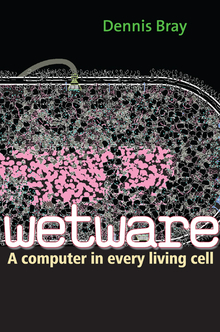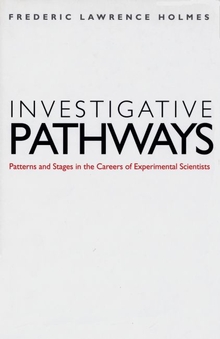Wetware
WARNING
You are viewing an older version of the Yalebooks website. Please visit out new website with more updated information and a better user experience: https://www.yalebooks.com
A Computer in Every Living Cell
Dennis Bray
In the tradition of as Erwin Schrödinger’s What Is Life? and Richard Dawkins’s The Selfish Gene, a distinguished cell biologist explains how living cells perform computations
How does a single-cell creature, such as an amoeba, lead such a sophisticated life? How does it hunt living prey, respond to lights, sounds, and smells, and display complex sequences of movements without the benefit of a nervous system? This book offers a startling and original answer.
In clear, jargon-free language, Dennis Bray taps the findings of the new discipline of systems biology to show that the internal chemistry of living cells is a form of computation. Cells are built out of molecular circuits that perform logical operations, as electronic devices do, but with unique properties. Bray argues that the computational juice of cells provides the basis of all the distinctive properties of living systems: it allows organisms to embody in their internal structure an image of the world, and this accounts for their adaptability, responsiveness, and intelligence.
In Wetware, Bray offers imaginative, wide-ranging and perceptive critiques of robotics and complexity theory, as well as many entertaining and telling anecdotes. For the general reader, the practicing scientist, and all others with an interest in the nature of life, the book is an exciting portal to some of biology’s latest discoveries and ideas.
"A provocative topic engaged in fine style by an author in full command of the relevant facts and history. This is a very interesting book."—Dale Purves, Center for Cognitive Neuroscience and Department of Neurobiology, Duke University
“Dennis Bray engages in a provocative debate about the computational capabilities of protein networks, while taking the reader on a delightful ramble across biology, from the antics of Stentor to the plasticity of synapses, with PacMan and robot salamanders along the way.”—Jeremy Gunawardena, Director, Virtual Cell Program, Harvard Medical School
“Biology and information lie at the heart of a new scientific revolution. In this timely and illuminating volume, Dennis Bray passionately weaves a compelling case for a computational view of life.”—Martyn Amos, author of Genesis Machines: The New Science of Biocomputing
“Drawing on the similarities between Pac-man and an amoeba and efforts to model the human brain, this absorbing read shows that biologists and engineers have a lot to learn from working together.” —Discover Magazine
Publication Date: March 1, 2011
23 b/w illus.








